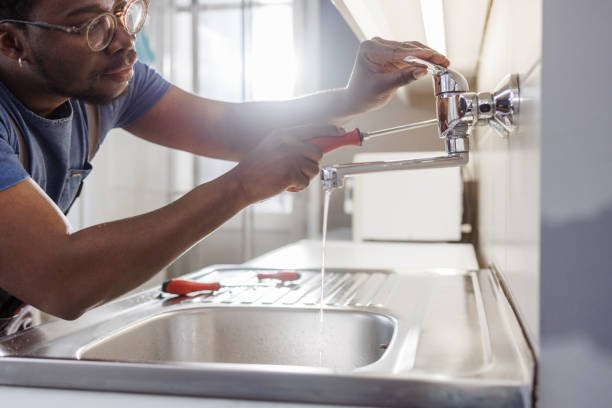
Water Removal & Emergency Plumbing can be detrimental to any business, leading to costly repairs and downtime. Mastering commercial water removal and emergency plumbing is crucial to maintaining a safe and operational commercial environment. Here are essential tips to help you manage these situations effectively.
The Importance of Prompt Water Removal
Quick water removal is vital in preventing long-term damage and health hazards. Standing water can lead to structural damage and mold growth, posing risks to both property and people. It’s crucial to address the issue immediately and repair the leak to prevent further complications.
Assessing the Situation
The first step in water removal is to assess the extent of the damage. Identifying the source of the water, whether it’s from flooding, a burst pipe, or a sewage backup, helps determine the appropriate response.
Utilizing Professional Equipment
Commercial-grade water removal equipment, such as submersible pumps, industrial wet/dry vacuums, and high-capacity dehumidifiers, can efficiently extract water and moisture. This equipment ensures a thorough drying process, reducing the risk of mold and mildew.
Ensuring Safety
Before beginning water removal, ensure the area is safe. Turn off electrical power to prevent accidents and wear protective gear to avoid exposure to contaminated water. Safety should always be a priority during cleanup efforts.
Effective Water Removal & Emergency Plumbing
Emergency plumbing issues can disrupt business operations and cause significant damage if not addressed promptly. Having a plan in place for these situations is essential, especially if you need to fix a slab leak quickly to minimize downtime and prevent further damage.
Identifying Common Plumbing Emergencies
Common plumbing emergencies in commercial settings include burst pipes, clogged drains, and sewage backups. Recognizing these issues early can help mitigate damage and expedite repairs.
Establishing a Response Plan
Developing an emergency response plan is critical for minimizing downtime. This plan should include contact information for reliable plumbing services, steps for shutting off the water supply, and protocols for notifying employees and tenants.
Preventive Maintenance
Regular maintenance can prevent many plumbing emergencies. Schedule routine inspections and maintenance for pipes, drains, and plumbing fixtures. Early detection of potential issues can save time and money in the long run.
Preventive Measures for Future Protection
Taking preventive measures can help protect your commercial property from future water-related issues, ensuring a safe and functional environment.
Installing Water Sensors
Water sensors can detect leaks early, alerting you to potential problems before they escalate. These sensors can be placed near vulnerable areas, such as pipes, water heaters, and appliances, providing an extra layer of protection.
Upgrading Plumbing Systems
Consider upgrading old or faulty plumbing systems to more durable and efficient options. Modern plumbing materials and technologies can reduce the risk of leaks and other issues, enhancing the overall reliability of your system.
Educating Employees and Tenants
Educate employees and tenants about the signs of water damage and plumbing issues. Encourage them to report any problems immediately, allowing for quick action to prevent further damage.
Fun Facts and Tips
Understanding the importance of commercial water removal and emergency plumbing can be more engaging with some interesting and fun facts.
Historical Insight
The ancient Romans were pioneers in plumbing systems, using lead pipes to bring water into cities. While their methods were advanced for their time, modern plumbing materials are much safer and more efficient.
The Cost of Water Damage
Water damage is one of the most common insurance claims for businesses. It accounts for billions of dollars in property losses each year, highlighting the importance of preventive measures and prompt action.
The Science of Mold Growth
Mold can begin to grow within 24-48 hours of water exposure. This rapid growth underscores the need for swift water removal and thorough drying processes to prevent health hazards and structural damage.
Energy-Efficient Plumbing
Upgrading to energy-efficient plumbing fixtures, such as low-flow toilets and faucets, can save water and reduce utility bills. These fixtures are environmentally friendly and cost-effective for businesses.
DIY vs. Professional Help
While minor plumbing issues can sometimes be handled with DIY solutions, major problems require professional intervention. Attempting to fix serious issues without proper expertise can lead to further damage and higher repair costs.
Mastering commercial water removal and emergency plumbing is essential for protecting your business from costly repairs and operational disruptions. By implementing effective strategies and preventive measures, you can ensure a safe and functional environment for your employees and customers.
Stay proactive in maintaining your plumbing systems, and don’t hesitate to seek professional help when needed. With the right approach, you can safeguard your commercial property and minimize the impact of water-related issues. Embrace these expert tips and enjoy the peace of mind that comes with a well-protected business.


